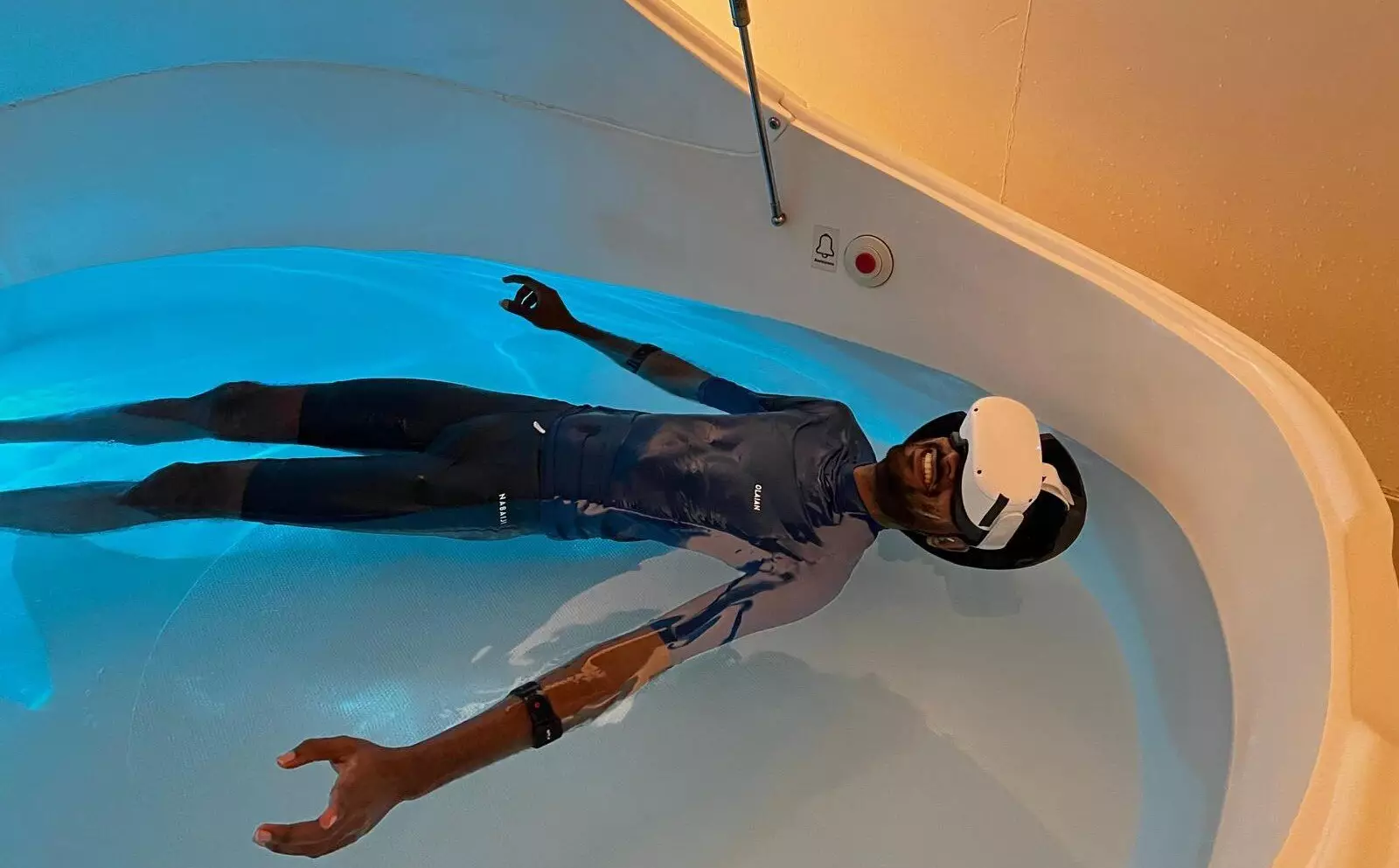In recent years, the intersection of technology and mental health has sparked innovative solutions for confronting phobias. One such approach is being explored by researchers at Monash University, who have developed a groundbreaking extended reality (XR) system to help those afflicted with aquaphobia—the fear of water. This unique therapy harnesses the immersive capabilities of virtual reality (VR) while providing a controlled physical environment in the form of floatation tanks. Such initiatives do not merely represent technological advancements; they highlight a paradigm shift in the approach to treatment, shifting from traditional therapeutic methods to interactive and engaging systems.
The Synergy of Water and Virtual Reality
The core concept of the XR system revolves around merging the therapeutic benefits of water with the engaging aspects of virtual environments. Participants are placed in floatation tanks while donning VR headsets, enveloping them in a multisensory experience designed to ease their apprehension towards water. By simulating serene aquatic settings, participants are guided by a virtual entity known as the “water spirit,” which plays a crucial role in providing reassurance and fostering a sense of safety—a vital element for anyone grappling with intense fears.
This venture exemplifies how technology can augment traditional therapeutic methods, akin to virtual reality exposure therapy (VRET). In VRET, patients are gradually exposed to their fears in a controlled and safe manner. Similarly, the Monash University system offers a structured journey through various virtual water worlds, progressively desensitizing users to their anxieties while entertaining them with a captivating narrative.
The research, conducted by the Exertion Games Lab, involved twelve participants who each reported significant fears related to water. The study was designed methodically, beginning with baseline measurements of heart rates and introducing the XR experience only after familiarizing the participants with the sensation of floating in water without any technological distractions. This tiered approach mirrors the incremental nature of exposure therapy, allowing participants to acclimatize to their surroundings before integrating virtual elements.
Interactive engagement was enhanced through body-centric controls, which do not require physical strain or complex movements. Instead, the system detects physiological responses like heart rate and breathing, tailoring the experience to each individual’s comfort level. This hands-free interaction is crucial; for those with extreme fears, the anxiety often extends beyond the water itself to the fear of performing inadequately in a therapeutic setting.
The findings from the study elucidate a significant trend: participants exhibited reduced anxiety levels during XR sessions compared to their time floating without technology. The researchers, led by Ph.D. candidate Maria Montoya, interpreted this as evidence of the XR system’s efficacy in alleviating the emotional weight associated with aquaphobia. The heart rate variability index confirmed that engaging content can effectively distract participants from their fears, fostering an opportunity for enjoyment—a luxury that many individuals with aquaphobia seldom experience.
The implications of this research extend beyond a single treatment modality; they advocate for a scalable model that can be adapted for broader applications in mental health therapy. The integration of games and narratives into scientifically-backed therapeutic practices might redefine how we approach treatment, particularly for individuals hesitant to confront their fears through conventional means.
As aquaphobia affects numerous individuals, the ripple effects of this groundbreaking study could pave the way for new therapeutic methods that not only focus on cognitive behavioral strategies but also embrace technological advancements for mental health benefits. While floating tanks and VR might not be the complete solution for everyone, they represent a significant step towards normalizing water-related activities for those who fear it.
Such approaches encourage society to reconsider the potential healing properties of water through technology. By reconciling fears, engaging imagination, and promoting relaxation in an environment that can feel both intimidating and exhilarating, future therapeutic interventions may continue to evolve, promising hope and healing for those in need. As researchers delve deeper into the intricacies of fear and technology, the future of aquatic therapy stands to become a beacon of innovative mental health treatment.


Leave a Reply